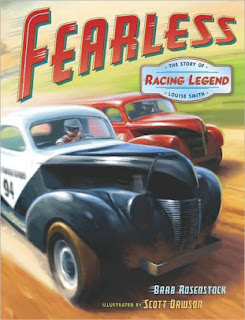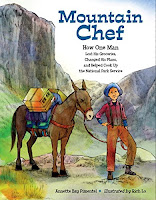I decided to type up the first fifty words of four different books. What did it tell me? Did I want to read on? How did it hook me? So, here are my four, starting with Owl Moon by Jane Yolen:
"It was late one winter night,
long past my bedtime,
when Pa and I went owling.
There was no wind.
The trees stood still
as giant statues.
And the moon was so bright
the sky seemed to shine.
Somewhere behind us
a train whistle blows,
long and low,
like a sad, sad song." (53 words)
The scene draws us in...late at night, wintertime, with a child and her father on a special adventure. Children will love the out-of-the-ordinary nighttime experience, feeling secure with a loved parent. The language is lovely and lyrical, drawing you in to the story. "Stood still as giant statues" brings the poetic use of alliteration as well as "long and low," which evokes melancholy. The use of alliteration of the words "somewhere," "sad," and "song" is lyrical language at its finest. The long vowel sounds throughout slow us down as we read. We are hooked by the sights and sounds as we join these two on their fascinating journey to see what they will find on this cold winter's night.
The second manuscript is Banjo Granny by Sarah Martin Busse:
"When Owen's Granny heard he was a baby who went wiggly, jiggly, all-around giggly, and tip over tumble for bluegrass music, she packed her banjo in its trusty old case with the taped-up handle. She put on her thousand-mile shoes. And she started out to cross one river, one mountain, and a desert." (52)
This story has a totally different feel to it from Owl Moon. You can tell it's going to be a fun romp. Will she make it safely to baby Owen's? What obstacles might she face as she crosses one river, one mountain, and a desert? The language is fun, and who doesn't like a Granny with moxie and determination? Her thousand-mile shoes tell you she's been around a while and is rich in experience, which helps her navigate the three obstacles. The refrain of "wiggly, jiggly, and all-around giggly and tip over tumble for bluegrass music" is used successfully to help move the story along. Not to mention it's so much fun to say!
The third story beginning is from Take a Picture of Me, James Van Der Zee! by Andrea J. Loney:
"Deep in the heart of Lenox, Massachusetts, in a white frame house nestled between his aunts' home and his grandparents' house, lived a boy named James VanDerZee. James was the oldest boy of three sons and two daughters. At the Van Der Zee's, the children learned about music and art, and kindness, too." (51)
What do we learn from the first words of this biography? We learn that family is important, kindness is emphasized, and that the Van Der Zee children were introduced to a variety of artistic pursuits. How will those facts feed into the story? Of the five "W's", we learn the WHO--James VanDerZee. We learn the WHAT-what he wants is to capture each person's uniqueness through art,(even though his art turns out to be photography). The WHEN is hinted at in that cameras were cutting edge at that time. The WHERE is Lenox, Massachusetts. Kindness is fleshed out in the story as he takes extra pains to portray each person at his or her best when he photographs them. Even when the photography business dries up, there is a bright spot for James when his many photos taken over the years are used for a Metropolitan Museum of Art Harlem exhibit. He has succeeded in his quest.
The last manuscript is Fearless, by Barb Rosenstock:
"In those days it was pretty tough to be a girl. You had to follow the rules. You couldn't speak your mind. You had to ask permission. There were games you couldn't play. You weren't allowed at the best schools. You were supposed to stay clean, quiet, and obedient." (49)
This takes place in a time when a woman was not expected to act like anything other than a refined lady. From this, we get the idea that someone is not going to fit the description of "clean, quiet, and obedient." Who is it, and how does she push the boundaries? In the next sentence we learn her name---Louise. First, she was not CLEAN when the car she borrowed hit a chicken coop, wood splinters covered the seats, and chicken feathers filled the air. She was not QUIET when she crunched into a troublesome driver, scraped a car into the wall, and va-roomed past all to the finish line. She was not OBEDIENT when she tells her husband (who has told her to never race again) she is going on a vacation, but goes instead to Daytona to race. Louise spent her life fast, faster, flying, free, and FEARLESS!
I hope you will find this exercise helpful in your own writing. Those first fifty words---make them fabulous and make them count!
























